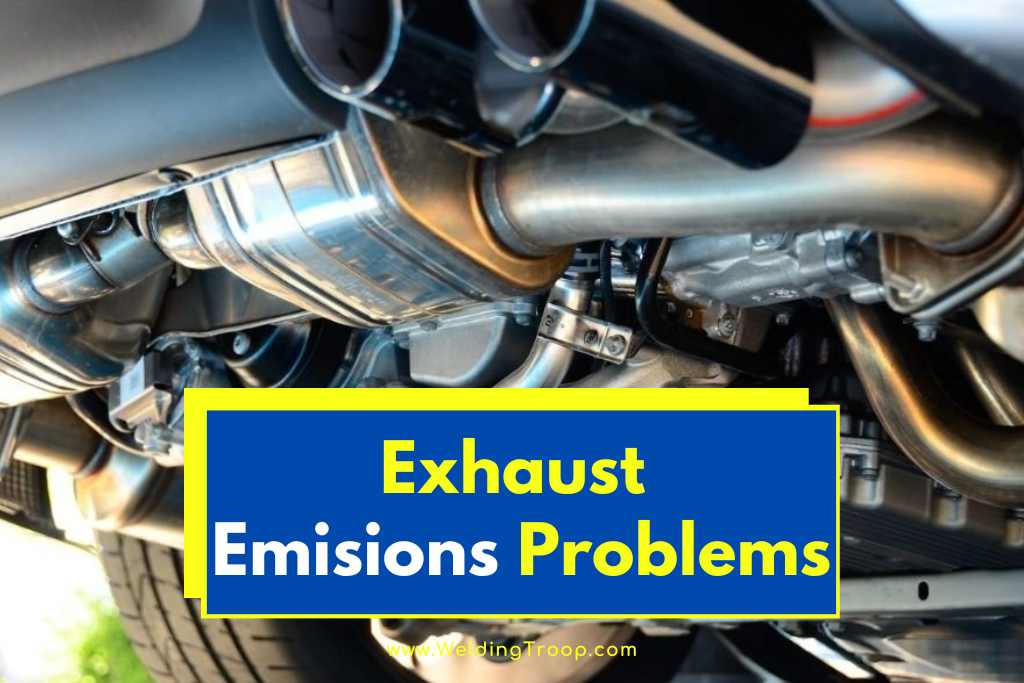Vehicle exhaust emissions are a significant environmental concern that has gained attention due to their potential health risks.
These emissions, which result from the combustion of fuel in internal combustion engines, release a mixture of harmful gases and particulate matter into the atmosphere.
In this comprehensive article, we will explore the impact of vehicle exhaust emissions on health, examining the various pollutants involved, their short-term and long-term effects, and the importance of addressing these issues.
Table of Contents
Understanding Vehicle Exhaust Emissions
Vehicle exhaust emissions encompass a variety of pollutants, including carbon dioxide (CO2), water vapor, nitrogen oxides (NOx), carbon monoxide (CO), sulfur dioxide (SO2), particulate matter (PM), and volatile organic compounds (VOCs).
These emissions are produced through the combustion of fossil fuels in engines, primarily gasoline and diesel. While modern vehicles are equipped with emission control systems designed to reduce these pollutants, the sheer volume of vehicles on the road and the aging of the vehicle fleet contribute to the ongoing emissions challenge.
The Health Impacts of Particulate Matter
Particulate matter (PM) is a major component of vehicle exhaust emissions and has been linked to various adverse health effects.
PM is categorized based on its size, with PM10 referring to particles with a diameter of 10 micrometers or less, and PM2.5 denoting particles with a diameter of 2.5 micrometers or less.
These fine particles, PM2.5, pose a greater health risk as they can penetrate deep into the respiratory system.
Short-term exposure to PM can lead to respiratory symptoms such as coughing, wheezing, and shortness of breath. Additionally, it can trigger asthma attacks, exacerbate existing respiratory conditions, and cause cardiovascular problems.
Long-term exposure to PM2.5 has been associated with chronic respiratory diseases, reduced lung function, cardiovascular diseases, and increased mortality rates.
Carbon Monoxide: A Silent Threat
Carbon monoxide (CO) is a toxic gas produced by the incomplete combustion of fuel. It is a colorless and odorless gas, making it particularly dangerous. When inhaled, carbon monoxide binds to hemoglobin in the blood, reducing its ability to transport oxygen. This can lead to symptoms such as dizziness, headache, weakness, nausea, and, in severe cases, loss of consciousness and death. Prolonged exposure to elevated levels of carbon monoxide can have serious health implications, including cardiovascular problems and neurological damage.
The Dangers of Nitrogen Oxides
Nitrogen oxides (NOx) are a group of gases that result from the combustion of fossil fuels at high temperatures.
The primary source of NOx in vehicle emissions is the combustion process in the engine. These gases can irritate the respiratory system, causing respiratory symptoms such as coughing, wheezing, and shortness of breath.
Long-term exposure to NOx has been linked to the development of chronic respiratory diseases, increased respiratory infections, and impaired lung function.
Additionally, NOx can react with other compounds in the atmosphere to form secondary pollutants such as ozone, which further exacerbates respiratory issues.
Read also >> Exhaust Leaks (Causes, Symptoms, and Solutions)
Read also >> Exhaust System Problems (Most Commons Problems)
Sulfur Dioxide: A Respiratory Hazard
Sulfur dioxide (SO2) is generated when fuels containing sulfur, such as diesel, are burned. It is a highly reactive gas that can cause irritation of the respiratory system.
Short-term exposure to high levels of SO2 can result in respiratory symptoms, including coughing, wheezing, and shortness of breath. Individuals with pre-existing respiratory conditions, such as asthma or chronic obstructive pulmonary disease (COPD), are particularly vulnerable to the effects of SO2.
Prolonged exposure to SO2 can lead to chronic respiratory diseases, cardiovascular problems, and damage to the respiratory epithelium.
The Hazards of Lead
Lead is a heavy metal that can be emitted from certain types of petrol engines, particularly those using leaded gasoline. Lead is a neurotoxicant and can have detrimental effects on the nervous system, particularly in children.
Inhalation or ingestion of lead can lead to lead poisoning, which can cause developmental delays, learning disabilities, decreased IQ, and behavioral problems.
Additionally, lead exposure has been associated with cardiovascular diseases, kidney damage, and reproductive issues.
Short-Term and Long-Term Effects of Exposure
Exposure to vehicle exhaust emissions can have both short-term and long-term effects on human health. Short-term exposure to high levels of pollutants can result in acute respiratory symptoms, including coughing, wheezing, and difficulty breathing.
These symptoms can be particularly severe in individuals with pre-existing respiratory conditions. Prolonged or chronic exposure to pollutants can lead to the development of chronic respiratory diseases, cardiovascular problems, and an increased risk of cancer.
Additionally, long-term exposure to vehicle exhaust emissions has been associated with reduced lung function, impaired cognitive development in children, and increased mortality rates.
Taking Action: Mitigating Vehicle Exhaust Emissions
To mitigate the health risks associated with vehicle exhaust emissions, various measures can be implemented at both individual and societal levels.
Individual Actions:
- Choose cleaner transportation options, such as electric vehicles or public transportation, whenever possible.
- Maintain regular vehicle maintenance to ensure optimal engine performance and minimize emissions.
- Carpool or combine trips to reduce the number of vehicles on the road.
- Practice eco-driving techniques, such as avoiding rapid acceleration and minimizing idle time.
Societal Actions:
- Implement stricter emissions standards for vehicles and enforce regular emissions testing.
- Promote the use of alternative fuels, such as biofuels and hydrogen, which produce fewer emissions.
- Invest in public transportation infrastructure to encourage its use and reduce reliance on private vehicles.
- Support research and development of innovative technologies to reduce emissions from vehicles.
Prioritizing Health and Sustainability
Vehicle exhaust emissions pose significant health risks and contribute to environmental degradation. It is crucial to address these issues by implementing effective measures to reduce emissions and promote sustainable transportation solutions.
By prioritizing health and sustainability, we can create a cleaner and healthier future for generations to come.

